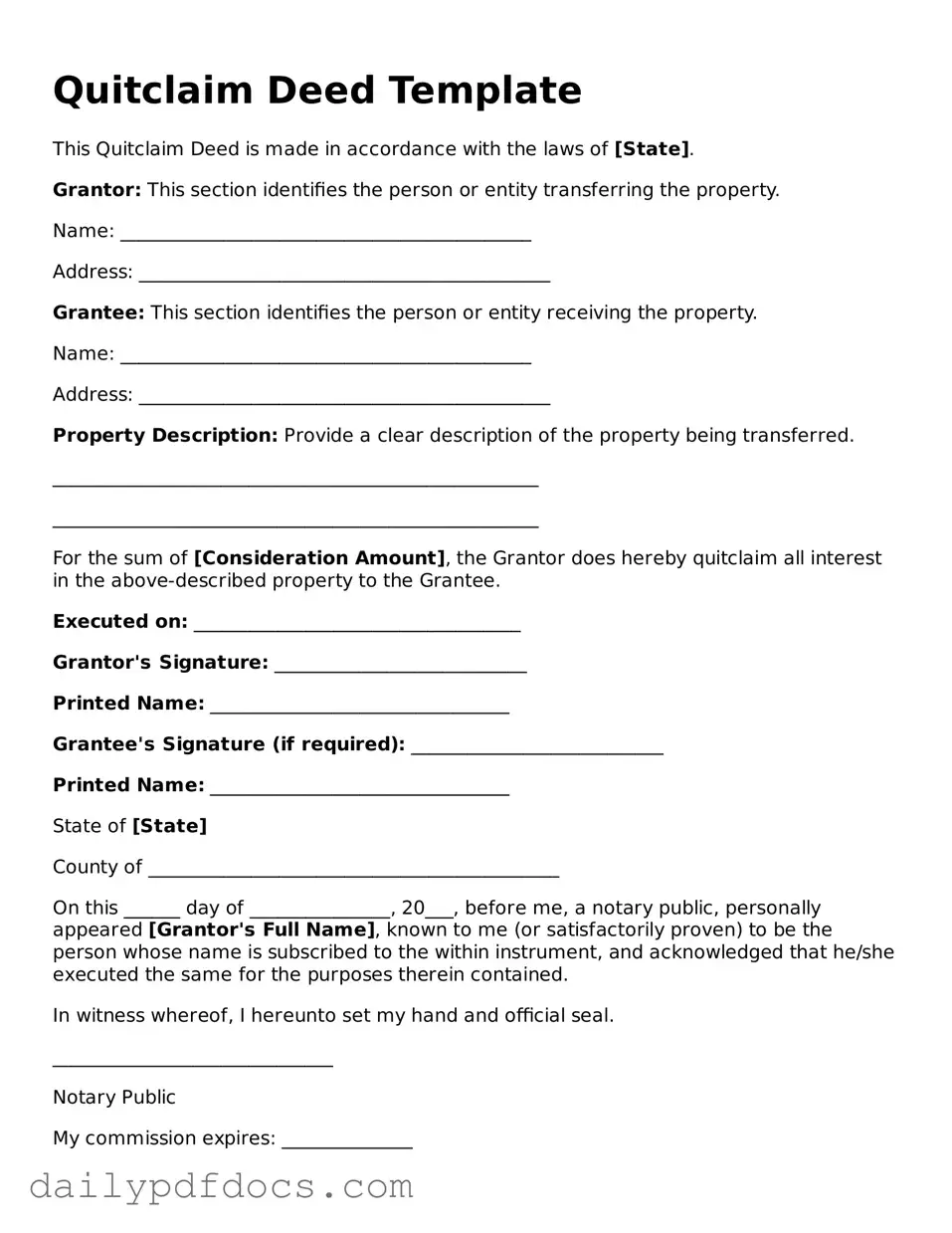Quitclaim Deed Template
This Quitclaim Deed is made in accordance with the laws of [State].
Grantor: This section identifies the person or entity transferring the property.
Name: ____________________________________________
Address: ____________________________________________
Grantee: This section identifies the person or entity receiving the property.
Name: ____________________________________________
Address: ____________________________________________
Property Description: Provide a clear description of the property being transferred.
____________________________________________________
____________________________________________________
For the sum of [Consideration Amount], the Grantor does hereby quitclaim all interest in the above-described property to the Grantee.
Executed on: ___________________________________
Grantor's Signature: ___________________________
Printed Name: ________________________________
Grantee's Signature (if required): ___________________________
Printed Name: ________________________________
State of [State]
County of ____________________________________________
On this ______ day of _______________, 20___, before me, a notary public, personally appeared [Grantor's Full Name], known to me (or satisfactorily proven) to be the person whose name is subscribed to the within instrument, and acknowledged that he/she executed the same for the purposes therein contained.
In witness whereof, I hereunto set my hand and official seal.
______________________________
Notary Public
My commission expires: ______________
